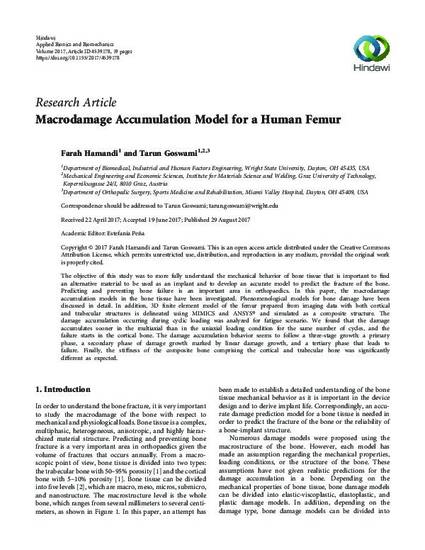
The objective of this study was to more fully understand the mechanical behavior of bone tissue that is important to find an alternative material to be used as an implant and to develop an accurate model to predict the fracture of the bone. Predicting and preventing bone failure is an important area in orthopaedics. In this paper, the macrodamage accumulation models in the bone tissue have been investigated. Phenomenological models for bone damage have been discussed in detail. In addition, 3D finite element model of the femur prepared from imaging data with both cortical and trabecular structures is delineated using MIMICS and ANSYS® and simulated as a composite structure. The damage accumulation occurring during cyclic loading was analyzed for fatigue scenario. We found that the damage accumulates sooner in the multiaxial than in the uniaxial loading condition for the same number of cycles, and the failure starts in the cortical bone. The damage accumulation behavior seems to follow a three-stage growth: a primary phase, a secondary phase of damage growth marked by linear damage growth, and a tertiary phase that leads to failure. Finally, the stiffness of the composite bone comprising the cortical and trabecular bone was significantly different as expected.
Available at: http://works.bepress.com/tarun-goswami/97/

This work is licensed under a Creative Commons Attribution 4.0 International License.